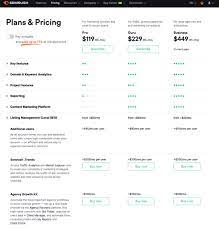Keyword Research: The Key to Unlocking Online Success
In the world of online marketing, keyword research is the foundation upon which successful campaigns are built. It is the process of identifying and analyzing the words and phrases that people use to search for information online. By understanding what your target audience is searching for, you can optimize your website content, ads, and other marketing efforts to attract more traffic and generate more leads.
Keyword research is not a one-time task but an ongoing process that requires continuous monitoring and analysis. Here are some of the key benefits of conducting keyword research:
Improved SEO: Search engine optimization (SEO) is all about ranking higher in search engine results pages (SERPs) for relevant keywords. By targeting the right keywords, you can improve your chances of appearing at the top of SERPs, driving more organic traffic to your website.
Better PPC campaigns: Pay-per-click (PPC) advertising allows you to bid on specific keywords to display ads to users who search for those terms. By researching relevant keywords with high search volume and low competition, you can create more effective PPC campaigns that yield higher click-through rates (CTRs) and conversions.
Content optimization: Keyword research helps you understand what topics your target audience is interested in and what type of content they prefer. By creating high-quality content around relevant keywords, you can attract more visitors to your site and establish yourself as an authority in your industry.
Competitive analysis: Keyword research also allows you to analyze what keywords your competitors are targeting and how successful their campaigns are. This information can help you identify gaps in their strategies and find opportunities to differentiate yourself from them.
So how do you conduct keyword research? Here are some steps:
Brainstorm potential keywords related to your business or industry.
Use online tools like Google Keyword Planner or SEMrush to identify related keywords with high search volume and low competition.
Analyze the search intent behind each keyword to understand what users are looking for when they search for that term.
Prioritize keywords based on their relevance, search volume, and competition level.
Monitor your keyword rankings and adjust your strategy as needed to stay ahead of the competition.
In conclusion, keyword research is a critical component of any successful online marketing campaign. By understanding what your target audience is searching for and optimizing your content accordingly, you can attract more traffic, generate more leads, and ultimately achieve greater success in the digital landscape.
9 Tips for Effective Keyword Research: From Long-Tail to Localization
- Start with a list of relevant topics and questions that your target audience is likely to search for.
- Use keyword research tools such as Google Keyword Planner, Ubersuggest, and SEMrush to find popular keywords related to your topic.
- Look for long-tail keywords (keywords with 3 or more words) as they tend to be less competitive and have higher conversion rates than shorter ones.
- Analyze the competition level of each keyword by looking at its search volume, CPC (cost-per-click), and difficulty score in the keyword research tool you are using.
- Consider localizing your keywords if you are targeting a specific region or country in order to optimize for local searches such as “restaurants near me” or “plumbers in [city].”
- Monitor trends in keyword search volume over time so that you can adjust your content strategy accordingly if needed.
- Utilize negative keywords to filter out irrelevant searches from showing up in your campaigns and save money on wasted clicks/impressions..
- Leverage voice search optimization techniques by including natural language phrases into your content such as “how do I…” or “what is the best way to…”
- Don’t forget about optimizing images with alt tags containing relevant keywords!
Start with a list of relevant topics and questions that your target audience is likely to search for.
Keyword Research Tip: Start with Relevant Topics and Questions
When it comes to keyword research, one of the most effective strategies is to start with a list of relevant topics and questions that your target audience is likely to search for. This approach allows you to identify high-value keywords that are directly related to your business or industry, and that are more likely to attract qualified traffic.
To begin, think about the core topics and themes that are most relevant to your business. For example, if you run a fitness center, your core topics might include weight loss, strength training, and nutrition. From there, brainstorm a list of questions that your target audience might ask related to those topics. These could include things like “how can I lose weight quickly?” or “what’s the best way to build muscle?”
Once you have a list of potential topics and questions, use online tools like Google Keyword Planner or SEMrush to identify related keywords with high search volume and low competition. Analyze the search intent behind each keyword to understand what users are looking for when they search for that term.
By starting with relevant topics and questions, you can ensure that your keyword research is focused on the needs and interests of your target audience. This approach not only helps you identify valuable keywords but also ensures that your content is optimized for the right searches.
In conclusion, starting with a list of relevant topics and questions can be an effective strategy for conducting keyword research. By understanding what your target audience is searching for and optimizing your content accordingly, you can attract more traffic, generate more leads, and ultimately achieve greater success in the digital landscape.
Use keyword research tools such as Google Keyword Planner, Ubersuggest, and SEMrush to find popular keywords related to your topic.
Keyword Research Tip: Use Tools to Find Popular Keywords
If you’re looking to improve your online visibility and attract more traffic to your website, then keyword research is a must. By identifying the right keywords and phrases that people are searching for, you can optimize your content and marketing efforts to reach a wider audience.
One of the easiest ways to conduct keyword research is by using keyword research tools such as Google Keyword Planner, Ubersuggest, and SEMrush. These tools allow you to find popular keywords related to your topic and analyze their search volume, competition level, and other metrics.
Google Keyword Planner is a free tool that allows you to enter keywords related to your business or industry and see how often they are searched for on Google. It also provides suggestions for related keywords that you may not have thought of.
Ubersuggest is another free tool that provides insights into the search volume, competition level, and estimated cost per click (CPC) for specific keywords. It also offers suggestions for related keywords based on user queries and search trends.
SEMrush is a more advanced keyword research tool that offers a range of features beyond just keyword analysis. It allows you to track your rankings for specific keywords, analyze your competitors’ strategies, and identify new opportunities for growth.
By using these tools, you can quickly identify popular keywords related to your topic and optimize your content accordingly. However, it’s important to remember that keyword research is an ongoing process that requires continuous monitoring and adjustment. Keep an eye on changes in search trends and adjust your strategy as needed to stay ahead of the competition.
In conclusion, using keyword research tools such as Google Keyword Planner, Ubersuggest, and SEMrush can help you find popular keywords related to your topic and improve your online visibility. Make sure to incorporate these tools into your overall keyword research strategy for maximum success.
Look for long-tail keywords (keywords with 3 or more words) as they tend to be less competitive and have higher conversion rates than shorter ones.
Unlocking the Power of Long-Tail Keywords in Your Keyword Research
When it comes to keyword research, many businesses focus on short, popular keywords that have high search volume. However, this approach can be highly competitive and may not yield the desired results. That’s where long-tail keywords come in.
Long-tail keywords are phrases that consist of three or more words and are more specific than shorter ones. For example, “best vegan restaurant in Los Angeles” is a long-tail keyword compared to “vegan restaurant.” While long-tail keywords may have lower search volume, they tend to be less competitive and have higher conversion rates.
Here are some reasons why you should consider incorporating long-tail keywords into your keyword research:
Less competition: Shorter keywords tend to have high competition levels, making it difficult for small businesses to rank for them. Long-tail keywords, on the other hand, are more specific and therefore have lower competition levels.
Higher conversion rates: Long-tail keywords often indicate a higher level of intent from the user. For example, someone searching for “best vegan restaurant in Los Angeles” is likely further down the buying funnel than someone searching for “vegan restaurant.” As a result, targeting long-tail keywords can lead to higher conversion rates.
Better targeting: Long-tail keywords allow you to target specific niche markets within your industry. By optimizing your content around these phrases, you can attract highly relevant traffic that is more likely to convert into customers.
So how do you find long-tail keywords? Here are some tips:
Use online tools like Google Keyword Planner or SEMrush to identify related long-tail keywords with low competition and high search volume.
Analyze your website analytics data to identify which long-tail keywords are driving traffic and conversions.
Brainstorm potential long-tail keywords based on your business or industry, and consider using natural language phrases that your target audience might use.
In conclusion, incorporating long-tail keywords into your keyword research can be a powerful strategy for improving your online visibility and driving conversions. By targeting highly specific phrases with lower competition levels, you can attract more relevant traffic and achieve greater success in the digital landscape.
Analyze the competition level of each keyword by looking at its search volume, CPC (cost-per-click), and difficulty score in the keyword research tool you are using.
Analyzing Keyword Competition: A Must-Do Step in Keyword Research
When it comes to keyword research, analyzing the competition level of each keyword is a crucial step that should not be overlooked. By assessing the competition level, you can determine how difficult it will be to rank for a particular keyword and whether it’s worth targeting in your marketing campaigns.
One way to analyze the competition level of a keyword is by looking at its search volume, CPC (cost-per-click), and difficulty score in the keyword research tool you are using. Here’s what each of these metrics means:
Search volume:
This refers to the number of searches for a particular keyword in a specific time frame. Higher search volume indicates greater demand for that keyword, but it also means more competition from other websites trying to rank for the same term.
CPC (cost-per-click):
This metric refers to how much advertisers are willing to pay per click on ads targeting that keyword. Higher CPCs typically indicate higher competition for that keyword.
Difficulty score:
This is a metric used by some keyword research tools to estimate how difficult it will be to rank for a particular keyword based on factors such as domain authority and backlink profile of competing websites.
By analyzing these metrics, you can get a better understanding of how competitive a particular keyword is and whether it’s worth targeting in your marketing campaigns. For example, if you find a high-volume keyword with low CPC and difficulty score, it may be an excellent opportunity to attract more traffic at lower costs.
On the other hand, if you find a high-volume keyword with high CPC and difficulty score, it may require more resources and effort to rank for that term effectively. In such cases, you may want to focus on long-tail keywords or niche-specific terms with lower competition levels instead.
In conclusion, analyzing the competition level of each keyword is a crucial step in keyword research that can help you make informed decisions about your marketing strategy. By considering metrics such as search volume, CPC, and difficulty score, you can identify high-opportunity keywords and avoid wasting time and resources on overly competitive terms.
Consider localizing your keywords if you are targeting a specific region or country in order to optimize for local searches such as “restaurants near me” or “plumbers in [city].”
Keyword Research Tip: Localize Your Keywords for Better Results
When conducting keyword research, it’s important to consider the location of your target audience. If you’re targeting a specific region or country, localizing your keywords can help you optimize for local searches and attract more relevant traffic to your website.
For example, if you’re a restaurant owner in Los Angeles, targeting the keyword “restaurants” may not be enough to stand out in a crowded online marketplace. However, by adding location-specific keywords such as “restaurants near me” or “best restaurants in Los Angeles,” you can increase your chances of appearing in local search results and attracting customers who are searching for nearby dining options.
Similarly, if you’re a plumber serving a specific city or town, using localized keywords such as “plumbers in [city]” or “emergency plumber [city]” can help you rank higher in local search results and connect with potential customers who are searching for plumbing services in their area.
By localizing your keywords, you can also improve the relevance and quality of your website content. Including location-specific information such as addresses, phone numbers, and customer reviews can further boost your visibility in local search results and establish trust with potential customers.
In conclusion, if you’re targeting a specific region or country, consider localizing your keywords to optimize for local searches and attract more relevant traffic to your website. By incorporating location-specific information into your content and SEO strategy, you can improve your chances of standing out in an increasingly competitive online marketplace.
Monitor trends in keyword search volume over time so that you can adjust your content strategy accordingly if needed.
Keyword research is an essential aspect of any online marketing strategy. It allows you to identify the words and phrases that your target audience is using to search for information related to your business. However, keyword research is not a one-time task. It requires continuous monitoring and analysis to ensure that your content strategy remains effective over time.
One important tip for keyword research is to monitor trends in keyword search volume over time. By doing so, you can gain insights into how user behavior and search patterns are evolving in your industry. You can identify new keywords that are gaining popularity or detect changes in the search volume of existing keywords.
By keeping track of these trends, you can adjust your content strategy accordingly. For example, if you notice that a particular keyword is losing popularity, you may want to shift your focus to other related keywords with higher search volume. Or if you notice a new trend emerging in your industry, you may want to create content around those topics to attract more traffic.
There are several tools available for monitoring trends in keyword search volume, including Google Trends and SEMrush. These tools allow you to track the popularity of specific keywords over time and compare them with other related keywords.
In conclusion, monitoring trends in keyword search volume is an important aspect of successful keyword research. By staying on top of these trends and adjusting your content strategy accordingly, you can ensure that your website remains relevant and visible in the ever-changing digital landscape.
Utilize negative keywords to filter out irrelevant searches from showing up in your campaigns and save money on wasted clicks/impressions..
Keyword research is an essential part of any online marketing campaign, but it’s not just about finding the right keywords to target. It’s also about filtering out irrelevant searches that can waste your advertising budget and reduce your ROI. That’s where negative keywords come in.
Negative keywords are words or phrases that you add to your PPC campaigns to prevent your ads from showing up for irrelevant searches. For example, if you sell high-end watches, you might add “cheap” or “discount” as negative keywords to filter out users who are searching for lower-priced options.
By utilizing negative keywords, you can save money on wasted clicks and impressions while ensuring that your ads are only shown to users who are likely to convert. This can improve your campaign’s performance and increase your ROI.
To identify negative keywords, start by analyzing the search terms report in your PPC account. Look for irrelevant searches that triggered your ads and add those terms as negative keywords. You can also use online tools like Google Keyword Planner or SEMrush to identify related keywords with low relevance.
In conclusion, utilizing negative keywords is a simple but effective way to filter out irrelevant searches from showing up in your campaigns and save money on wasted clicks and impressions. By regularly monitoring and updating your negative keyword list, you can ensure that your ads are only shown to users who are most likely to convert, improving the overall performance of your campaigns.
Leverage voice search optimization techniques by including natural language phrases into your content such as “how do I…” or “what is the best way to…”
Unlocking the Power of Voice Search Optimization with Natural Language Phrases
With the rise of voice assistants like Siri, Alexa, and Google Assistant, voice search optimization has become an essential part of any successful online marketing strategy. To stay ahead of the competition, businesses must adapt their content to match the way people speak and search for information.
One effective technique for optimizing your content for voice search is to include natural language phrases that mimic how people ask questions in real life. This means using conversational language and long-tail keywords that reflect the way people speak.
For example, instead of targeting short keywords like “best restaurants,” you could use natural language phrases like “what are the best restaurants near me?” or “where can I find the best Italian food in town?” These longer phrases better reflect how people ask questions when using voice search.
By including these types of phrases in your website content, you can improve your chances of appearing in voice search results and increase your visibility to potential customers. Additionally, by answering common questions related to your industry or business, you can establish yourself as an authority and build trust with your audience.
In conclusion, leveraging natural language phrases in your content is a powerful technique for optimizing your website for voice search. By understanding how people speak and incorporating conversational language into your content strategy, you can improve your chances of ranking higher in voice search results and ultimately drive more traffic and leads to your business.
Don’t forget about optimizing images with alt tags containing relevant keywords!
When it comes to keyword research, many businesses focus solely on optimizing website content and neglect the importance of images. However, optimizing images with alt tags containing relevant keywords can have a significant impact on your website’s search engine rankings and overall visibility.
Alt tags are HTML attributes that provide alternative text descriptions for images. They are used by search engines to understand the content of an image and provide context for visually impaired users who use screen readers. By including relevant keywords in your alt tags, you can help search engines understand what your images are about and improve their relevance for specific search queries.
To optimize your images with alt tags, follow these simple steps:
Choose descriptive file names for your images that include relevant keywords.
Include alt tags in the HTML code of your web pages that describe the content of each image using relevant keywords.
Avoid stuffing alt tags with too many keywords or using irrelevant or spammy terms.
Ensure that your alt tags accurately reflect the content of each image and provide helpful information to users who cannot see them.
By optimizing your images with relevant alt tags, you can improve the overall SEO performance of your website and attract more traffic from image searches. So don’t forget to include this simple but effective tip in your keyword research strategy!





